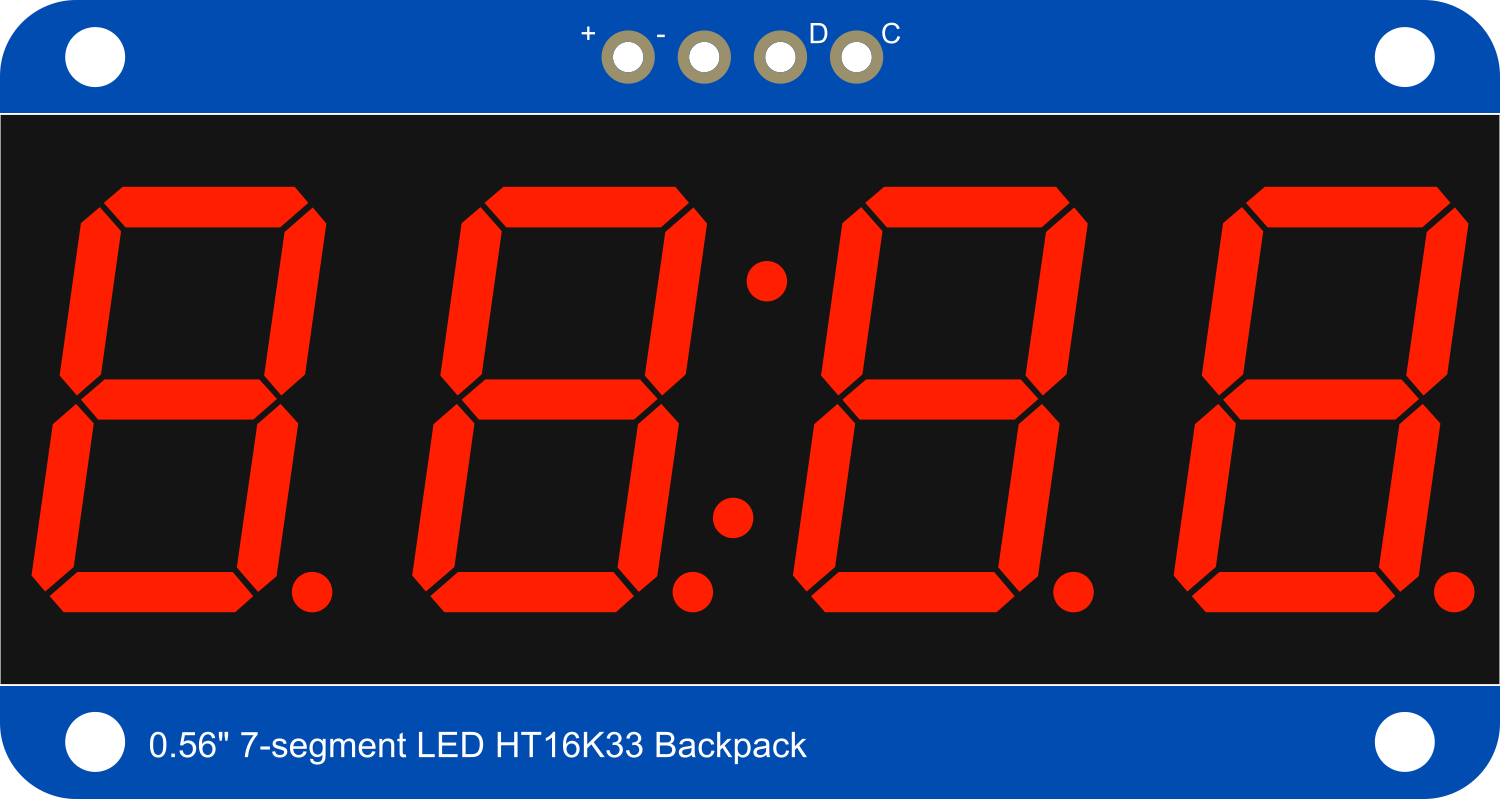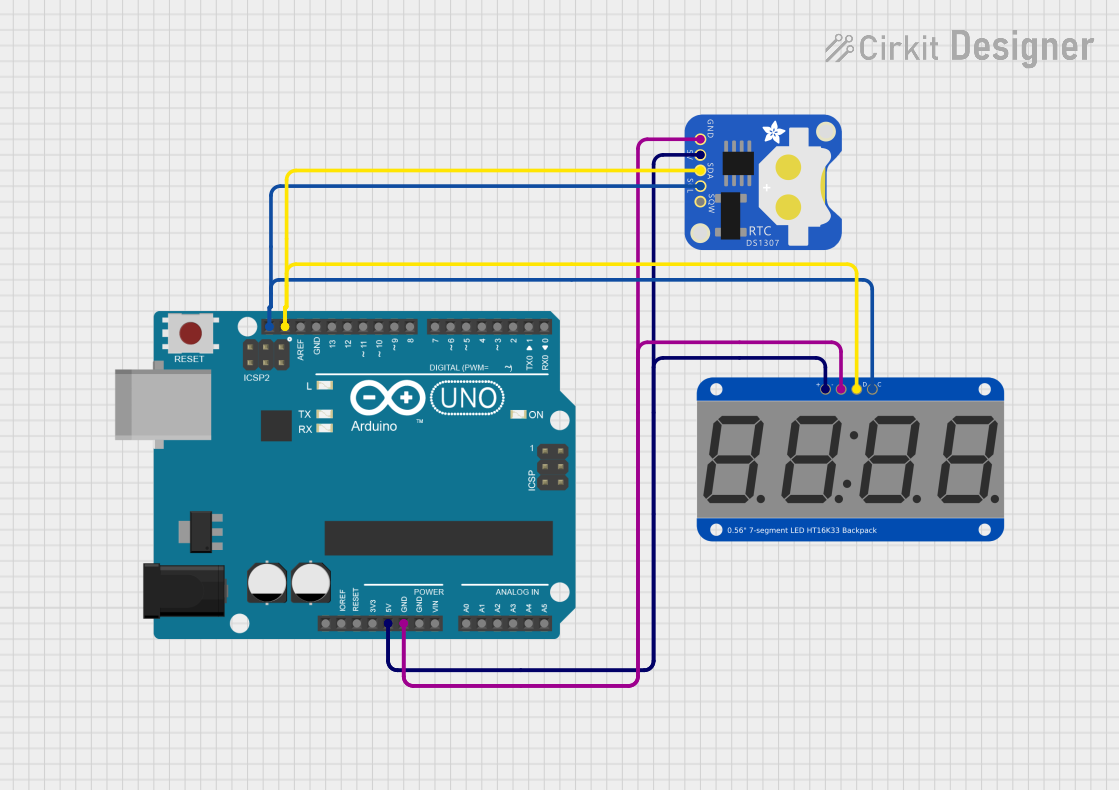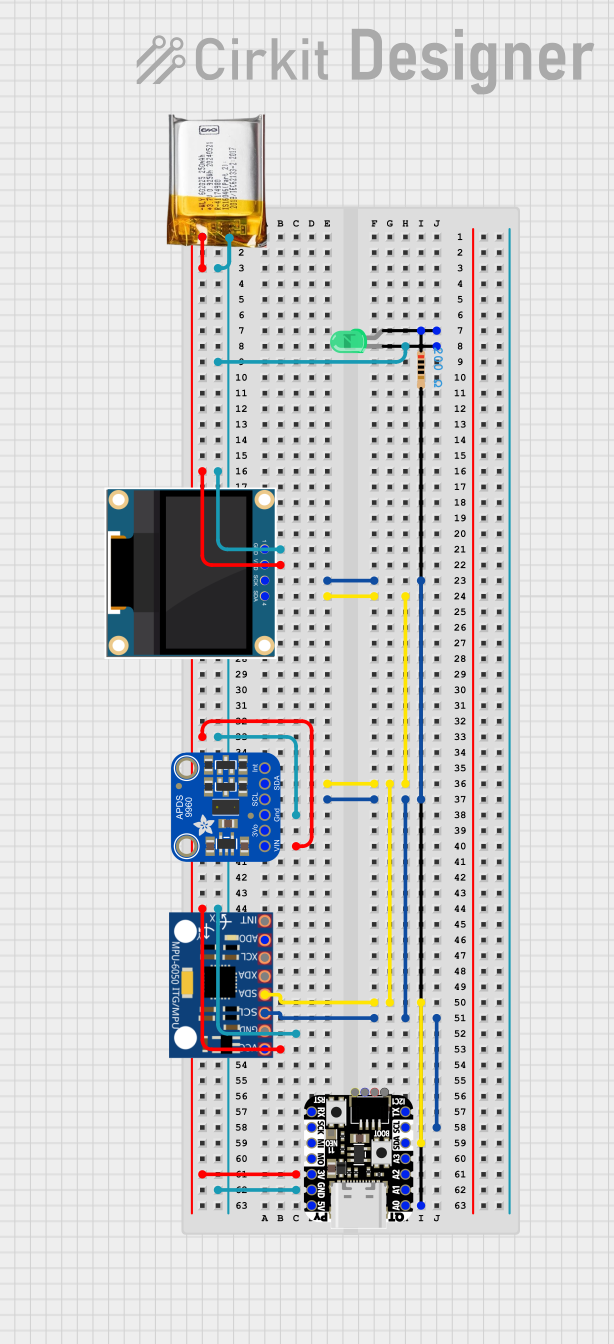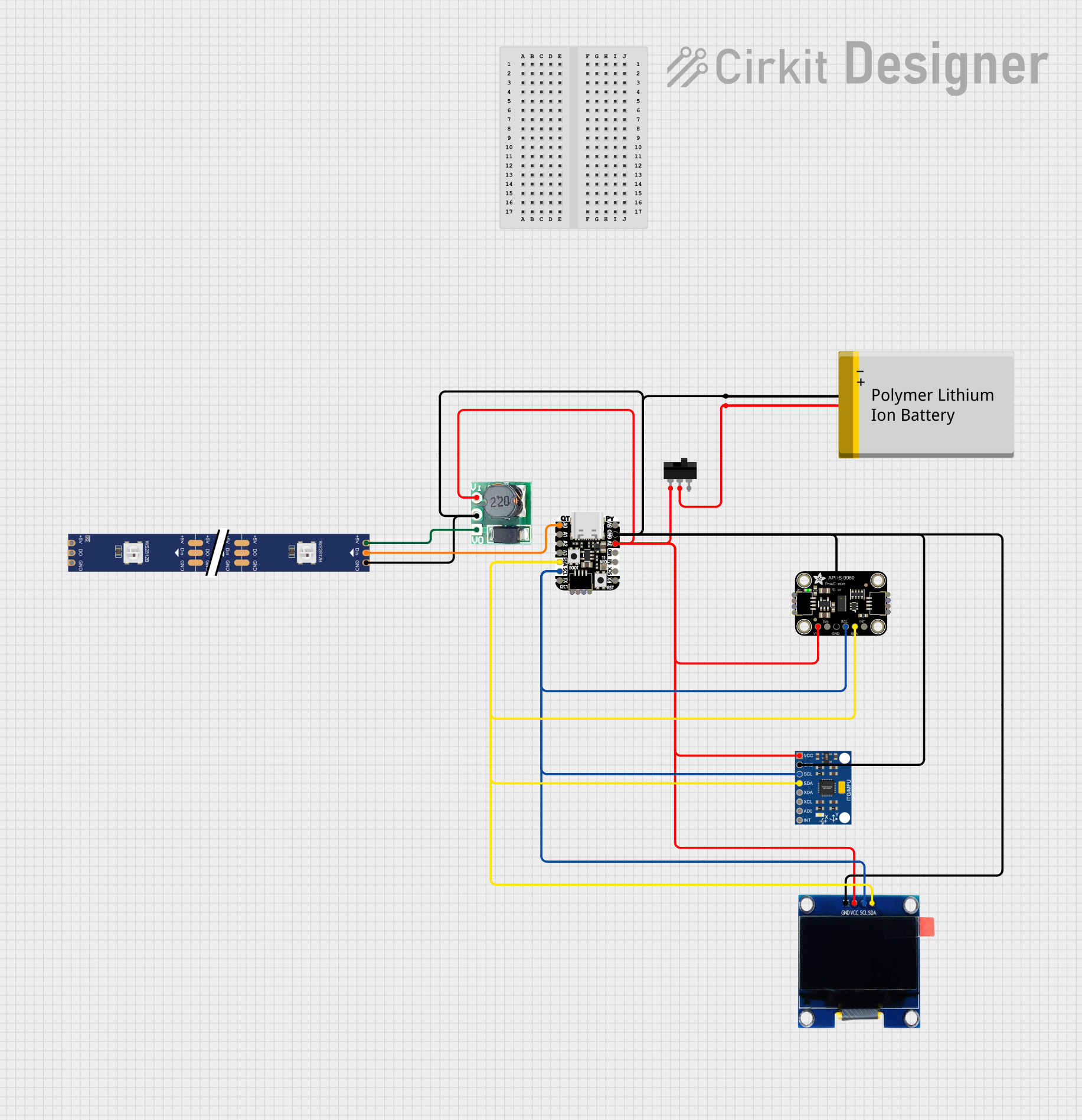
How to Use Adafruit 0.56 inch 7-segment LED Backpack Red: Examples, Pinouts, and Specs

 Design with Adafruit 0.56 inch 7-segment LED Backpack Red in Cirkit Designer
Design with Adafruit 0.56 inch 7-segment LED Backpack Red in Cirkit DesignerIntroduction
The Adafruit 0.56 inch 7-segment LED Backpack Red is a user-friendly module designed to drive 7-segment LED displays. This component simplifies the process of displaying numbers and characters with its bright red LEDs. It is ideal for projects requiring numeric output, such as clocks, counters, and readouts in various electronics applications.
Explore Projects Built with Adafruit 0.56 inch 7-segment LED Backpack Red

 Open Project in Cirkit Designer
Open Project in Cirkit Designer
 Open Project in Cirkit Designer
Open Project in Cirkit Designer
 Open Project in Cirkit Designer
Open Project in Cirkit Designer
 Open Project in Cirkit Designer
Open Project in Cirkit DesignerExplore Projects Built with Adafruit 0.56 inch 7-segment LED Backpack Red

 Open Project in Cirkit Designer
Open Project in Cirkit Designer
 Open Project in Cirkit Designer
Open Project in Cirkit Designer
 Open Project in Cirkit Designer
Open Project in Cirkit Designer
 Open Project in Cirkit Designer
Open Project in Cirkit DesignerCommon Applications
- Digital clocks
- Timers
- Counters
- Scoreboards
- Thermometers
Technical Specifications
Key Technical Details
- Display Color: Red
- Digit Height: 0.56 inches
- Operating Voltage: 2.7V - 5.5V
- Max Current: 100mA (all LEDs on)
- Interface: I2C
- I2C Addresses: 0x70 (default) - 0x77 (selectable with solder jumpers)
Pin Configuration and Descriptions
| Pin | Description |
|---|---|
| GND | Ground connection |
| VCC | Power supply (2.7V - 5.5V) |
| SDA | I2C Data line |
| SCL | I2C Clock line |
Usage Instructions
Interfacing with a Circuit
- Connect the
GNDpin to the ground of your power supply. - Connect the
VCCpin to a positive power supply (2.7V - 5.5V). - Connect the
SDAandSCLpins to the I2C data and clock lines of your microcontroller, respectively.
Important Considerations and Best Practices
- Ensure that the power supply does not exceed 5.5V to prevent damage.
- Use pull-up resistors on the I2C lines if your microcontroller does not have built-in pull-ups.
- To change the I2C address, solder the address jumpers on the back of the PCB.
Example Code for Arduino UNO
#include <Wire.h>
#include <Adafruit_LEDBackpack.h>
#include <Adafruit_GFX.h>
Adafruit_7segment matrix = Adafruit_7segment();
void setup() {
matrix.begin(0x70); // Initialize the display with its I2C address
}
void loop() {
matrix.print(1234, DEC); // Display the number 1234
matrix.writeDisplay(); // Refresh the display with new data
delay(500); // Wait for half a second
}
Troubleshooting and FAQs
Common Issues
- Display not lighting up: Check the power connections and ensure the I2C address is correct.
- Garbled output: Ensure there are no conflicts with the I2C address and the connections are secure.
- Dim display: Check if the power supply voltage is too low or if the current limit is too high.
Solutions and Tips
- Double-check wiring, especially the I2C lines and power supply connections.
- Use the
matrix.setBrightness(uint8_t b)function to adjust the brightness if the display is too dim or too bright. - If using multiple displays, make sure each has a unique I2C address.
FAQs
Q: Can I use this module with a 3.3V system? A: Yes, the module can operate at a voltage as low as 2.7V.
Q: How do I change the I2C address? A: Solder the address jumpers on the back of the PCB to configure the address between 0x70 and 0x77.
Q: Can I display letters as well as numbers? A: Yes, the 7-segment display can show some letters and characters, though with limited representation due to the segment layout.
Q: How many of these displays can I chain together? A: You can chain up to 8 displays by setting unique I2C addresses for each.
For further assistance, refer to the Adafruit support forums or the product's FAQ page.